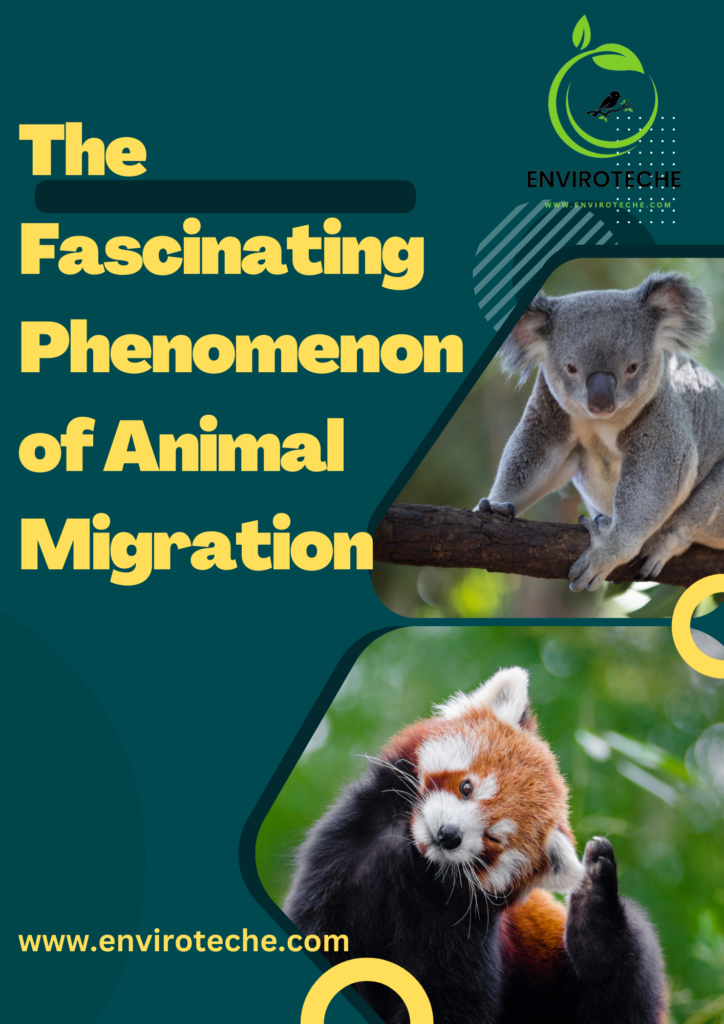
The Fascinating Phenomenon of Animal Migration
Introduction:
Animal migration is one of the most fascinating natural occurrences. The natural world is full of wonders. Numerous animals have traveled tremendous distances throughout the course of history, exhibiting astounding navigational prowess and fortitude. We will delve into the fascinating world of animal migration in this blog post, learning about long-distance migrations, navigational strategies, and the ecological relevance of these amazing treks.
Understanding Animal Migration:
The normal, seasonal movement of animals from one location to another is referred to as animal migration. Numerous animal species, including birds, mammals, fish, insects, and even reptiles, exhibit this phenomenon. There are many different reasons why people migrate, including in search of food, breeding chances, or to escape unfavorable environmental conditions.
Long-Distance Migrations:
Long-distance migrations are the extraordinary treks made by different animal species, frequently covering thousands of km. Here are a few noteworthy instances:
Birds: Long-distance avian migrations are known for their amazing feats of travel. When migrating annually round-trip, species like the Arctic Tern travel approximately 70,000 kilometers, while the Bar-tailed Godwit has the record for the longest non-stop flight at roughly 11,000 kilometers.
Marine Life: Whales, sea turtles, and some fish species are among the marine animals that migrate far. Take the thousands of km that humpback whales travel to reproduce and give birth in warmer waters.
Insects: Known for their extraordinary multigenerational migration, monarch butterflies can travel up to 4,500 km to get to their wintering grounds in Mexico.
Monarch Butterflies: A multigenerational journey of monarch butterflies can cover up to 4,800 kilometers. They demonstrate a complex interplay between heredity, environmental cues, and navigational skills as they migrate from breeding areas in North America to overwintering locations in Mexico.
Arctic Terns: Arctic terns travel about 71,000 kilometers annually through the longest known migratory route of any mammal. Using the current wind patterns and astronomical cues, they move from their breeding grounds in the Arctic to the Antarctic.
Humpback Whales: Every year, humpback whales travel between their breeding grounds in tropical or subtropical waters and their feeding grounds in Polar Regions. These amazing mammals use landmarks, ocean currents, and the Earth’s magnetic field to navigate, allowing them to travel up to 25,000 kilometers in a single year.
Navigation Mechanisms:
The accuracy with which migratory animals can travel huge distances is a matter of tremendous scientific interest. While the precise methods differ between species, a number of widespread navigational techniques have been found:
Celestial Navigation: During migration, a lot of birds and insects use celestial cues, such as the sun, moon, or stars’ positions, to help them find their way. They are able to keep moving in the same direction because of this amazing talent.
Magnetic Sensitivity: Many animals can navigate accurately because they naturally feel the Earth’s magnetic field. Birds, sea turtles, and several fish species have all been shown to exhibit magnet perception.
Landmarks and Geographic Features: Some animals use well-known landmarks, beaches, or mountain ranges as their navigational aids. Animals can find their way by identifying and remembering geographic elements.
Ecological Significance:
Animal migrations are essential for preserving ecosystem health and balance. There are numerous ways to interpret the significance of these journeys:
Nutrient Transport: Animals moving across environments frequently carry nutrients. For instance, salmon transport nutrients from the ocean to rivers, enhancing freshwater habitats and enhancing the welfare of other species.
Seed Dispersal: Hummingbirds, among other migratory birds, are essential for pollination and seed dissemination. Their motions aid in the dispersal of plants and habitat renewal.
Trophic Interactions: Important trophic interactions result from predatory species frequently following the migratory patterns of their prey. Ecosystems can be shaped by these interactions, which can affect population dynamics.
Conclusion:
Animal migration is an enthralling example of how adaptable and resilient different species are. These voyages are amazing and fascinating, from the endurance of monarch butterflies to the exact navigation of Arctic terns. Conservation efforts and the preservation of these amazing natural events depend on an understanding of the mechanisms underlying migration and an appreciation of its ecological relevance.
About the Authors:
Muhammad Qasim1, Nimra Ather2
1Department of Environmental Sciences, Government College University Faisalabad
2Department of Zoology, University of Agriculture Faisalabad
Read Other Scientific Information:

